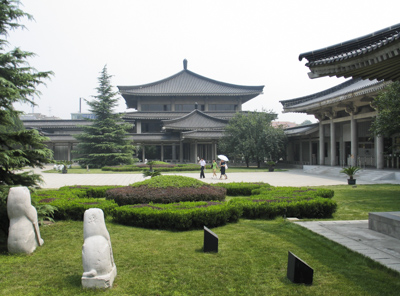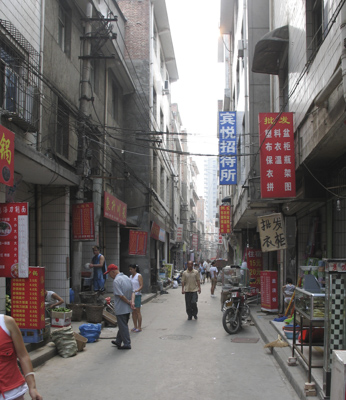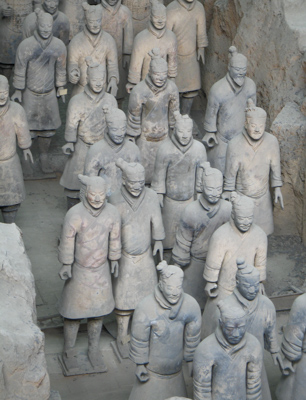August 16, 2007
My colleagues and I flew from Beijing to Xi’an to visit the sights of the ancient capital. The air was thick with smog when we landed, and the road between the airport and the city was lined with heavy industrial factories. Visibility was poor everywhere; everything had a grayish tone.

Xi’an is one of the oldest capitals of ancient China and dates from the Qin Dynasty 9th century BC. The city was also the starting point of the “Silk Road” which was the early trading route across China to Europe.

Our hotel was in a large complex of offices, shopping center, and mall. Like Beijing, everything is on a very large scale. We had two full days ahead of us to explore the sights of the city.

This was the view from the window of my room at the hotel.


Our guide took us to Xianyang Museum which was an excellent introduction to the very long and complicated history of China. The building had been a Confucian temple originally built in the 1500s but completely renovated now.

The museum has a wonderful collection of ancient artifacts exhibited chronologically dating from about 221BC. We did not see all nine halls of the museum, but the relics we saw were amazing.

Photography was not allowed in the museum except at a giant exhibit of photographs of Terracotta Warriors. It was interesting to see how different the faces actually are.

It was still early when we returned to the hotel, so we explored the shopping center:

Then we walked out to explore the narrow alleyways were local people lived, played, and shopped:







Early the next morning, a van took our small group out of the city to see the Terracotta Army at the tomb of China’s first emperor, Qin Shi Huang.

The museum consists of three large pits and an exhibition hall of the Bronze Chariots.

One of the Bronze Chariots with terracotta horses:

Emperor Qin ordered the creation of the army in 246BC to serve him in his afterlife. He wanted to have the same military power and imperial status after he died that he had during his lifetime. The huge Pit#1 pictured below protects the army from the elements:

Pit #1 is the size of an airplane hangar and contains over 6,000 Terracotta figures of soldiers and horses. However, only 2,000 are on display and excavation work is ongoing. The clay figures were buried facing east in rows towards the ancient enemies of the Qin State.


Every figure differs in facial features and expression, clothing, hairstyle, and gestures.



After being buried for 2,000 years, the Terracotta Army was discovered in 1976 by local farmers who were digging a well. The find is considered to be one of the greatest archaeological sites in the world.

Emperor Qin Shi Huang died in 210BC. while 720,000 builders worked for 40 years to complete the army of clay figures. Seeing it was incredible!!!


We returned to the hotel in heavy traffic:

The doorman in an ancient costume:
